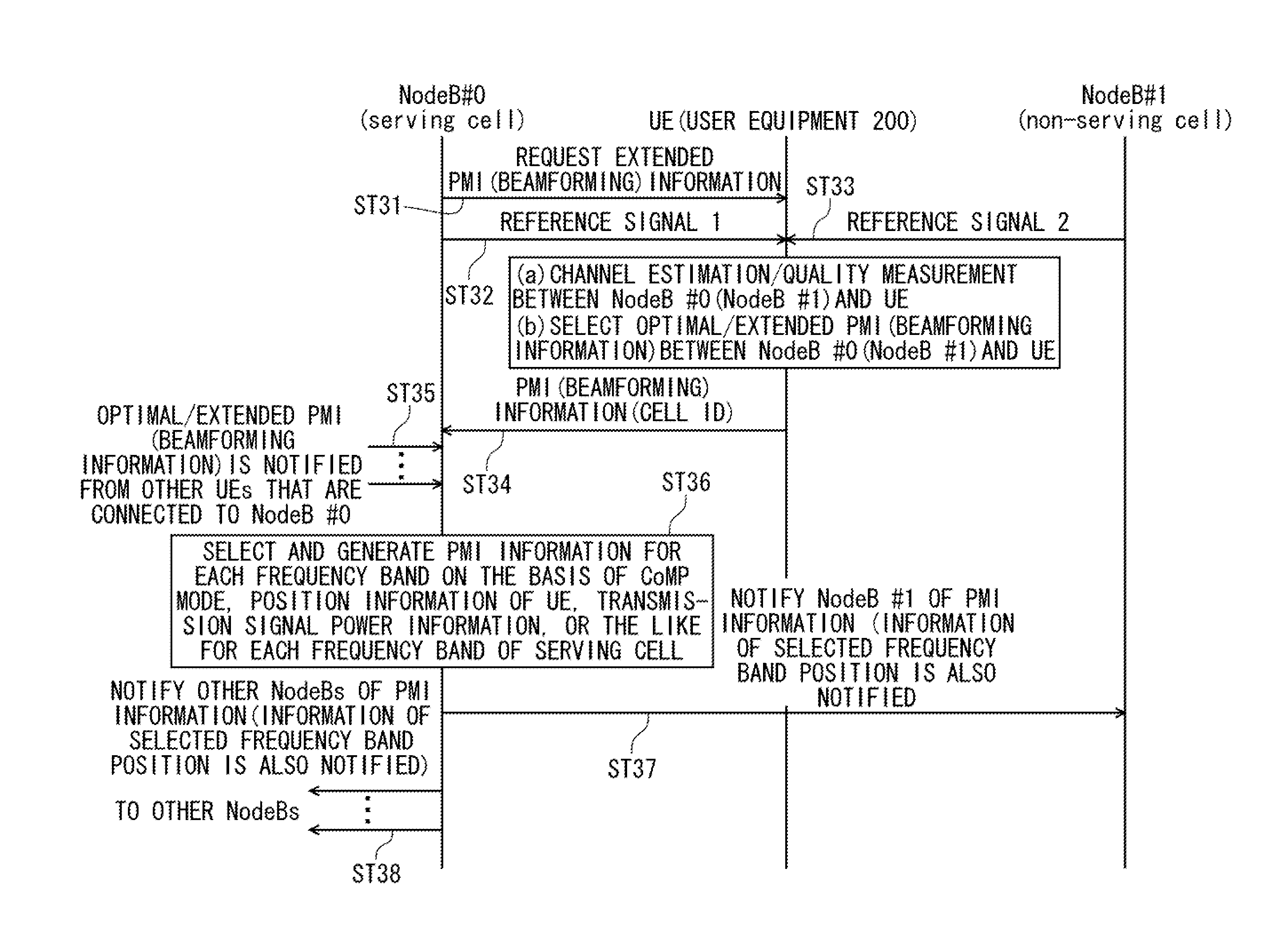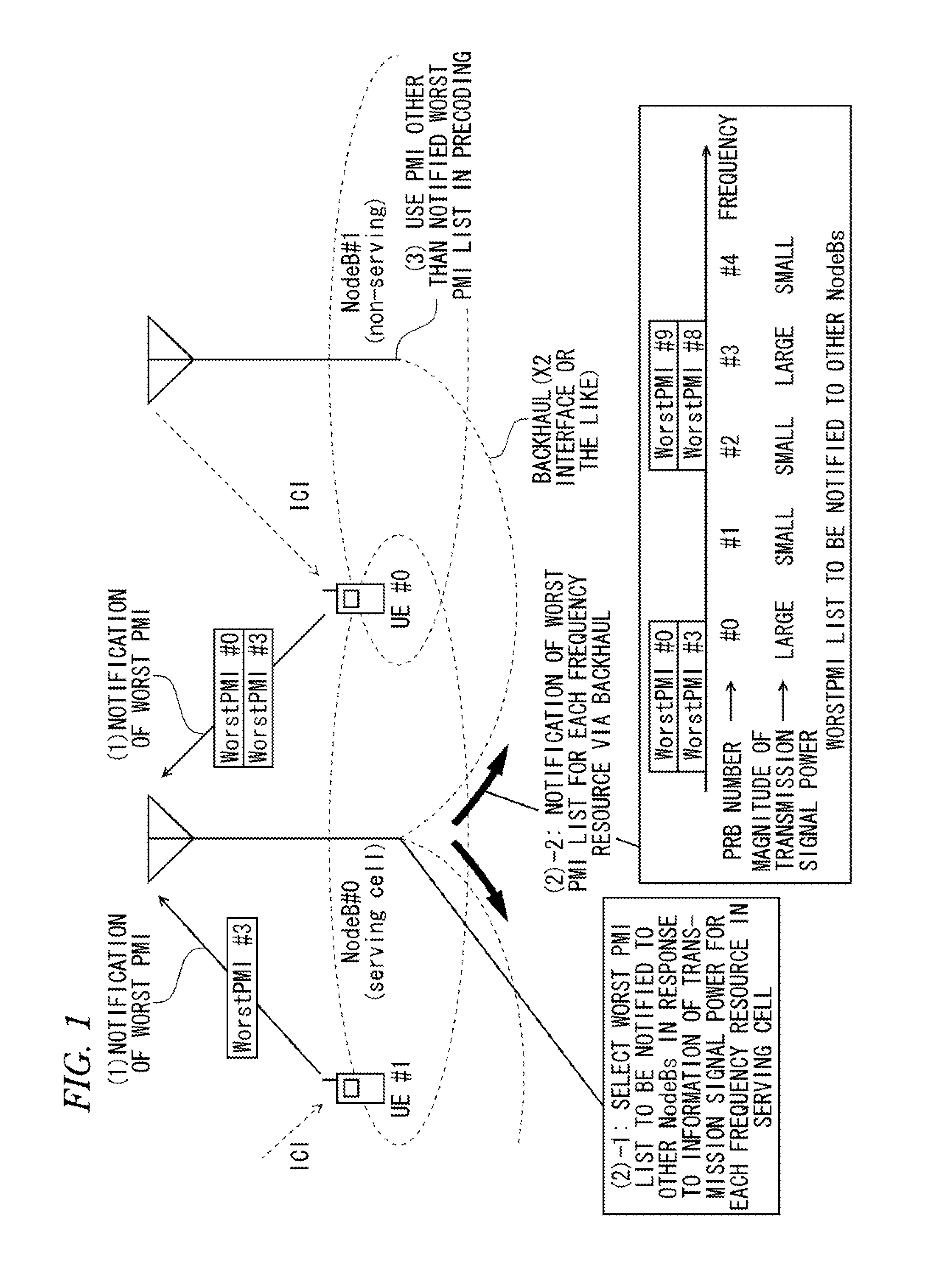Communication apparatus and communication method
- Summary
- Abstract
- Description
- Claims
- Application Information
AI Technical Summary
Benefits of technology
Problems solved by technology
Method used
Image
Examples
first embodiment
[0062]A first embodiment will be described in detail. This embodiment has the following characteristics (a) to (c).
[0063](a) An amount of precoding (beamforming) information (for example, the number of PMI lists) that is to be notified to other nodes via the backhaul is variably controlled in response to a resource position of a frequency domain, and this information and information of a selected frequency resource position are notified to other nodes.
[0064](b) Information of a magnitude of future transmission power (density), a magnitude of (normalized) transmission signal energy (density), or good or bad of a communication quality for each frequency resource in the serving cell, and the amount of the precoding (beamforming) information (for example, the number of PMI lists) at the frequency resource position are correlated with each other.
[0065](c) As the future transmission power (density) or (normalized) transmission signal energy (density) for each frequency resource in the ser...
first modification example
[0118]In a first modification example according to the first embodiment, a communication apparatus 100A is characterized in that information of a magnitude of transmission power (density) or (normalized) transmission signal energy (density), or information of good or bad of a communication quality for each frequency resource in the serving cell, and an amount of precoding (beamforming) information (for example, the number of PMI lists) at the frequency resource position are correlated with each other. In addition, the conceptual diagram of the transmission system according to the first embodiment shown in FIG. 1 may be also applied to this modification example.
[0119]FIG. 6 shows a block diagram illustrating a configuration of the communication apparatus 100A according to the first modification example.
[0120]The communication apparatus (base station (NodeB)) 100A shown in FIG. 6 includes a reception processing unit 101, a control information extracting unit 103, an extended PMI list ...
second modification example
[0147]As the transmission power (density) or (normalized) transmission signal energy (density) for each frequency resource in the serving cell is large (or small), or as the communication quality becomes better (or worse) for each frequency resource in the serving cell, a communication apparatus of a second modification example related to the first embodiment allows the extended PMI list selecting unit 131 to increase (or decrease) the amount of the precoding (beamforming) information (for example, the number of PMI lists) at a corresponding resource.
[0148]Here, an operation of the communication apparatus of the second modification example related to the first embodiment is different from the operation of the communication apparatus 100A in an operation of the extended PMI list selecting unit 131, and therefore, in this modification example, the operation of the extended PMI list selecting unit 131 that performs the different operation will be mainly described.
[0149]The operation of...
PUM
 Login to View More
Login to View More Abstract
Description
Claims
Application Information
 Login to View More
Login to View More - R&D
- Intellectual Property
- Life Sciences
- Materials
- Tech Scout
- Unparalleled Data Quality
- Higher Quality Content
- 60% Fewer Hallucinations
Browse by: Latest US Patents, China's latest patents, Technical Efficacy Thesaurus, Application Domain, Technology Topic, Popular Technical Reports.
© 2025 PatSnap. All rights reserved.Legal|Privacy policy|Modern Slavery Act Transparency Statement|Sitemap|About US| Contact US: help@patsnap.com



